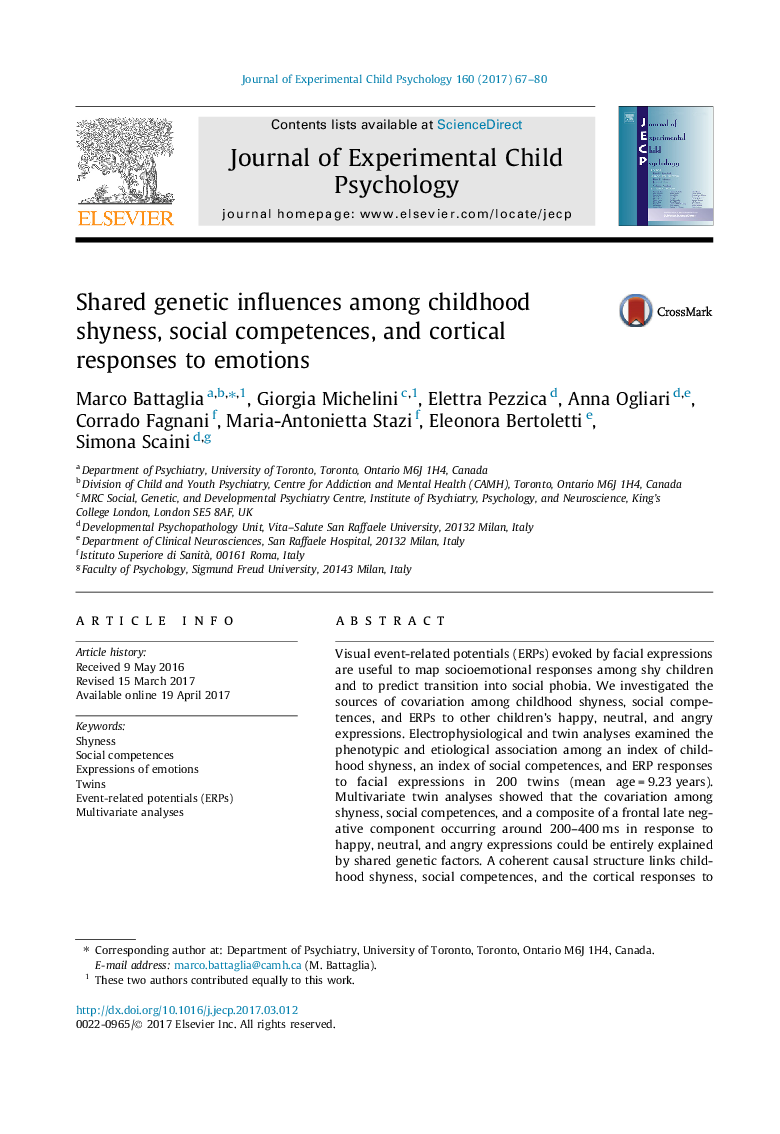| Article ID | Journal | Published Year | Pages | File Type |
|---|---|---|---|---|
| 5039968 | Journal of Experimental Child Psychology | 2017 | 14 Pages |
â¢Associations among shyness, social competences and ERP to facial expressions were investigated.â¢A late negative ERP phenotypically correlated with shyness and social competences.â¢Shared genetic factors entirely explained the association between variables.â¢A common genetic substrate can explain the interrelatedness of these phenotypes.
Visual event-related potentials (ERPs) evoked by facial expressions are useful to map socioemotional responses among shy children and to predict transition into social phobia. We investigated the sources of covariation among childhood shyness, social competences, and ERPs to other children's happy, neutral, and angry expressions. Electrophysiological and twin analyses examined the phenotypic and etiological association among an index of childhood shyness, an index of social competences, and ERP responses to facial expressions in 200 twins (mean age = 9.23 years). Multivariate twin analyses showed that the covariation among shyness, social competences, and a composite of a frontal late negative component occurring around 200-400 ms in response to happy, neutral, and angry expressions could be entirely explained by shared genetic factors. A coherent causal structure links childhood shyness, social competences, and the cortical responses to facial emotions. A common genetic substrate can explain the interrelatedness of individual differences for childhood shyness, social competences, and some associated electrophysiological responses to socioemotional signals.
